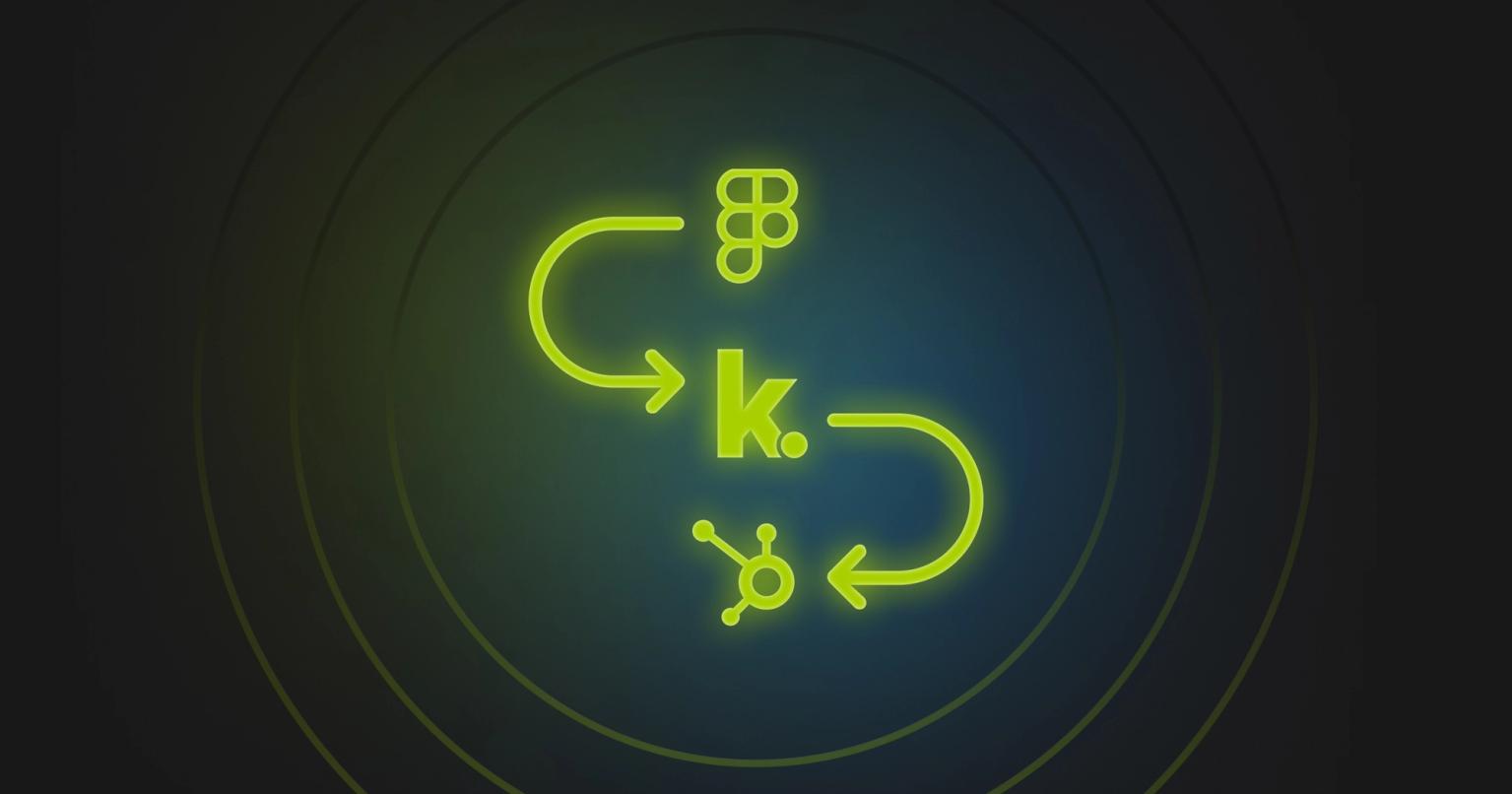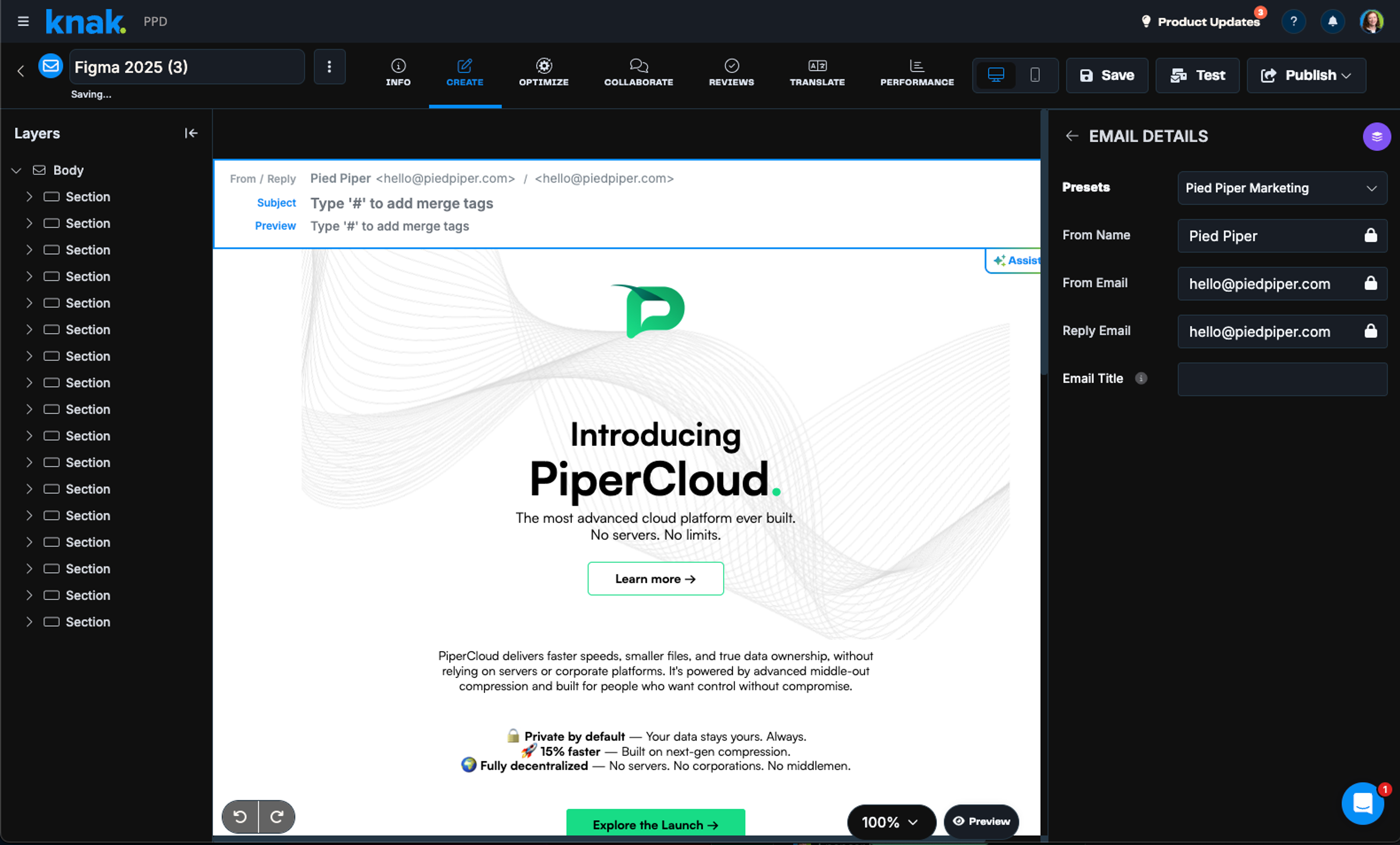From Figma to HubSpot: Solving the design-to-email production gap

Summary
Turn Figma designs into HubSpot-ready emails in hours, not days.
Your designer is out this week. The product launch email needs to go out Thursday. You have their Figma mockup - it's beautiful, on-brand, and exactly what the campaign needs. But between that Figma file and your HubSpot marketing automation platform lies a gap that typically takes 8 to 14 working days to bridge.
This scenario plays out weekly in enterprise marketing departments. Design resources are precious and stretched across multiple projects. Marketing ops teams need to maintain campaign velocity regardless of designer availability. With 54.9% of companies juggling six or more emails in production simultaneously, waiting for specialized resources creates compounding delays.
Here's the challenge: it's not about any single platform's limitations. HubSpot excels at marketing automation, customer journey orchestration, and analytics. Figma provides sophisticated design capabilities. But these tools exist in different technical universes.
Figma uses modern web standards like flexbox and CSS Grid. Email requires table-based layouts with inline CSS. One speaks in RGB color values, the other needs hex codes. The translation between these worlds traditionally requires specialized expertise that most marketing teams don't have on demand.
You need more than beautiful designs or powerful automation. You need the bridge between them - a way to take existing Figma designs and turn them into production-ready emails without waiting for developer resources or learning new technical skills.
The enterprise workflow that actually scales Figma and HubSpot
Here's a common enterprise scenario: your global technology company has standardized on Figma for design and HubSpot for marketing automation. The design team has created a library of email components - headers, product showcases, testimonials, CTAs - all approved by brand and built to company standards. These designs live in Figma, carefully crafted and pixel-perfect.
Monday morning, you need to adapt last month's product announcement template for a new regional campaign. The designer who built it is on vacation. Your developer is deep in a website project. The campaign needs to launch Thursday across twelve markets, each with localized content and imagery.
In the traditional workflow, you have three options. Wait for the designer to return. Pull your developer off their project. Or attempt to recreate something similar directly in HubSpot, knowing it won't match the original design quality. Most teams choose option three, gradually diluting their brand standards with each compromise.
The Figma plugin transforms this scenario. Those approved email components in Figma become immediately accessible to marketing ops. You open the existing design, make your content updates directly in Figma using the approved components, and sync to production. No waiting for specialized resources. No technical expertise required. No compromise on design quality.

How the translation works
The plugin reads Figma's design intent and translates it into email-compatible code. Modern layouts become nested tables that render consistently. Typography choices convert to email-safe font stacks. Spacing, colors, and responsive behavior are preserved.
This isn't a rough approximation - it's an accurate translation that maintains design integrity.
Enterprise testing and personalization
The email arrives in Knak fully formed and functional. Here's where enterprise needs are specifically addressed. You can verify rendering across all major email clients before anything touches HubSpot. Dark mode behavior is automatically handled based on your brand colors. Responsive scaling works reliably, not just in preview but in actual client testing.
For that global technology campaign, personalization happens visually. Instead of writing HubL or struggling with merge tags, you designate dynamic content areas through Knak's interface. Regional product images swap based on subscriber location. Pricing displays in local currency. CTAs route to appropriate landing pages. All configured without code, all testable before deployment.
Stakeholder approval without friction
The collaboration happens with actual rendered emails. When you route the campaign for approval, stakeholders review exactly what subscribers will see. Legal verifies the footer renders correctly with required disclaimers. Regional managers confirm their localized versions display properly. Brand guardians ensure consistency is maintained.
Translation workflows, critical for global enterprises, are streamlined. The German version that needs 30% more character space? The layout accommodates it automatically. French accents and special characters? Properly encoded. Right-to-left languages? Supported without separate templates. Each regional variant maintains design consistency while adapting to local requirements.
The Knak to HubSpot connection
The integration between Knak and HubSpot is purpose-built for enterprise marketing operations. This isn't a generic HTML export that you paste and pray. The connection understands HubSpot's specific requirements and enterprise deployment patterns.
Setting up takes minutes, not days of IT involvement. Within Knak's admin panel, you authorize HubSpot access. For enterprises using Business Units - standard practice when managing multiple brands or regions - you configure separate integrations for each unit. The Business Unit ID, found in your HubSpot settings, ensures emails route correctly without manual intervention.
What gets preserved in the sync
When you sync from Knak to HubSpot, the email arrives production-ready. HubSpot personalization tokens are properly formatted. Dynamic content rules are preserved. The responsive code works within HubSpot's sending environment while maintaining cross-client compatibility. Enterprise requirements like custom properties, contact fields, and list segmentation integrate seamlessly.
This preserves HubSpot's strengths in automation and analytics while solving for design production. Your workflows, lead scoring, and attribution models remain unchanged. What changes is the quality and speed of email creation feeding into those systems. Instead of spending days rebuilding designs or settling for template limitations, you're deploying sophisticated, on-brand emails that reflect your enterprise's design standards.

Governance without bottlenecks
For organizations with complex approval chains, the process maintains governance without sacrificing speed. Central brand teams control the Figma component library. Regional teams access approved designs through Knak. Everything syncs to the appropriate HubSpot Business Unit with proper permissions and access controls. The enterprise requirements for consistency, compliance, and control are met without creating production bottlenecks.
The integration also addresses enterprise scale. Whether you're sending to thousands or millions, the code is optimized for HubSpot's infrastructure. Rendering is consistent regardless of list size. Personalization tokens work reliably even with complex segmentation. The emails that look perfect in testing remain perfect at scale.
Figma to HubSpot: Enterprise email production
The transformation extends beyond individual campaigns. This workflow fundamentally changes how enterprise marketing teams operate.
Design teams create reusable component systems in Figma, knowing they'll translate accurately to email. These become organizational assets that any team member can leverage, not just those with technical expertise. Brand consistency improves because teams use approved components rather than attempting recreations.
Marketing ops professionals gain autonomy. When campaigns need quick turnarounds, they're not blocked waiting for design or development resources. They can adapt existing designs, implement personalization, and deploy campaigns while maintaining quality standards. Their expertise in campaign strategy and automation is applied to higher-value work than manual production.
The timeline compression is dramatic but not reckless. Reducing 8 to 14 days to hours doesn't mean cutting corners. It means eliminating redundant work. No manual rebuilding of existing designs. No back-and-forth on interpretation. No discovering rendering issues after deployment. The time saved is pure waste elimination, not quality compromise.
For global enterprises managing multiple brands and markets, this scalability is transformative. One design system serves all regions. Localization happens without duplication. Brand governance is maintained without constraining regional flexibility. The infrastructure scales with organizational growth rather than becoming a bottleneck.
Consider the cumulative effect: if your team produces 50 emails quarterly, and each saves 10 days of production time, you've reclaimed 500 days annually. That's not just efficiency - it's competitive advantage. Campaigns launch when markets are ready, not when production allows. Testing and optimization increase because variants are easier to create. Response to market conditions accelerates.
The enterprise email production challenge isn't about choosing better tools. HubSpot remains excellent for automation. Figma continues leading in design. The challenge is bridging these worlds efficiently at enterprise scale. That bridge now exists, proven in organizations managing hundreds of campaigns across multiple markets.
Start with your next campaign where design resources are constrained. Use existing Figma designs through Knak to create production-ready emails for HubSpot. Measure the time saved and quality maintained. Then expand to your broader email program.
The workflow is ready. The integration is proven. The only question is how quickly you'll reclaim those lost weeks of production time.












